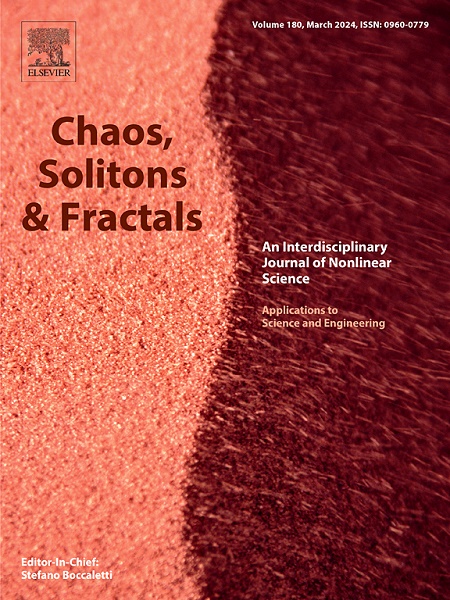Statistical, simulation and modeling analysis of variability in memristors with single and bilayer dielectrics of HfO2 and Al2O3, a comparison
IF 5.3
1区 数学
Q1 MATHEMATICS, INTERDISCIPLINARY APPLICATIONS
引用次数: 0
Abstract
Variability is a key aspect of memristors that hinders their usage in massive commercial applications. This study investigates the cycle-to-cycle variability of resistive switching devices fabricated using three different dielectric configurations: two monolayer insulators (Al2O3 or HfO2) or a HfO2/Al2O3 bilayer. Thousands of resistive switching (RS) current-voltage (I-V) curves were measured under ramped voltage stress and the RS parameters were extracted using different numerical methodologies. The variability of the obtained RS parameters was analyzed using the conventional 1D coefficient of variation (σ/μ, where σ stands for the standard deviation and μ for the mean), as well as a recently introduced 2D coefficient of variation, providing a deeper insight into the joined variability of the switching voltages and currents.
An enhanced version of the Stanford compact model was employed to model the experimental I-V curves, in addition to an analysis based on a 3D circuit breaker (CB) simulator, which incorporates thermal effects for controlling the switching of the CB. These two modeling approaches successfully captured the observed RS behavior and variability trends along the thousands of measured cycles and for the three considered technologies. Furthermore, the simulation study sheds light on how the different thermal properties of the studied technologies impact on the conductive filament evolution.
求助全文
约1分钟内获得全文
求助全文
来源期刊

Chaos Solitons & Fractals
物理-数学跨学科应用
CiteScore
13.20
自引率
10.30%
发文量
1087
审稿时长
9 months
期刊介绍:
Chaos, Solitons & Fractals strives to establish itself as a premier journal in the interdisciplinary realm of Nonlinear Science, Non-equilibrium, and Complex Phenomena. It welcomes submissions covering a broad spectrum of topics within this field, including dynamics, non-equilibrium processes in physics, chemistry, and geophysics, complex matter and networks, mathematical models, computational biology, applications to quantum and mesoscopic phenomena, fluctuations and random processes, self-organization, and social phenomena.
 求助内容:
求助内容: 应助结果提醒方式:
应助结果提醒方式:


